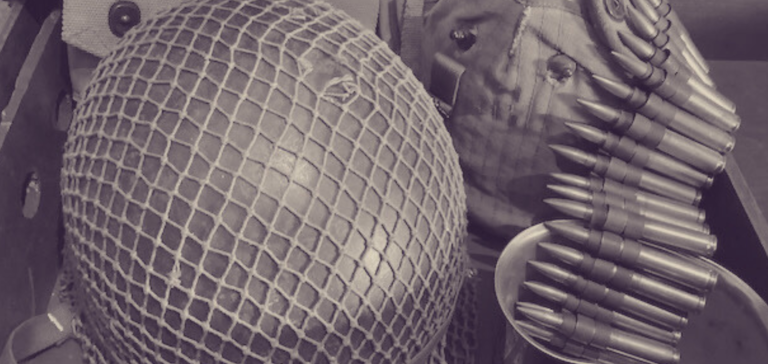From Aimless to Serious Militaria Collector
After accumulating some of the classic battle rifles of the U.S., Britain and Germany during the first year as a militaria collector, that same clear focus evaporated in year two when I began to pursue U.S. WWII ETO militaria.

The books featured in the previous episode were unknown to me then. I was told early on, and ignored, the need for reference books, except for those on the subject of rifles. To be fair, I wasn’t told which books I needed, plus, I didn’t know exactly what I wanted to collect as my interests were still in their embryonic form.
Had I had a few of the books mentioned in the previous episode, would my focus have taken shape much earlier, or much differently? I don’t know. It was kind of a chicken and the egg thing.
That lack of clarity left me chasing whatever made my eyes light up on a seller’s page. One was the M-1945 packs. They look very GI.

Per the nomenclature used in the GI Collector’s Guide, this set consisted of the Pack, Field, Combat, M-1945 (upper pack), and the Pack, Field, Cargo, M-1945 (lower pack). These attached to each other, and to suspenders which attached to a cartridge or pistol belt for stability.
The problem here is that this pack, although developed in 1944 and 1945, wasn’t standard issue until after the war. So, although it’s featured in the WWII Guide, a more appropriate starting point for an issued pack would have been the M-1928 pack and the M-1936 “musette” bag.
Not that it was a misstep, but the other item blindly acquired was an M-1942 stainless steel (CRS -Corrosive Resistant Steel) canteen with a 1944 date.

It came with a cup and cover. Had I had the Guide, I would have realized that this was just one of a variety of collectibles, just within the canteen family. During WWII, along with stainless steel versions, there were also aluminum, ethocel (a yellow plastic), and enamel canteens. Among the aluminum canteens there were those with vertical welded seams, and those with horizontal welded seams.
Among the enamel canteens, there were those with a very dark purple color, and those with the rare dark blue finish. To top it off, all of these canteens, except for the stainless steel ones, had one of three cap types. There was the aluminum cap, the plastic with a flat top, and the plastic with a recessed top.

Having not the seen the Guide yet, I was satisfied that, “Okay, I’ve got the canteen.”
I proceeded to find first aid pouches, a .45 magazine pouch, a couple of mess kits with covers, a couple of compasses, an entrenching tool and carrier, wire cutters and pouch, and a couple more canteens.
Three months into the year, I discovered the GI Collector’s Guide. That’s when I could see where the items I had, fit into the big scheme of things, and what I still needed to fill in the blanks. That was an exciting time, as I now had a clear direction.
A method evolved where I would focus on the varieties of one item, and set out to acquire each one. Of particular interest was the Mackinaw coat, aka, jeep jacket.




There were three examples shown in the Guide. The Type 1, the British made, and the Type 3. Not shown in Volume I of the Guide, but in the less popular Volume II, was the 2nd pattern, also a smart looking jacket. It took some hunting, but eventually all four types made it into my collection.
That became my modus operandi going forward. At this point, I was started to feel like a serious, and better informed, militaria collector. I was starting to look before I leaped.







2 Comments